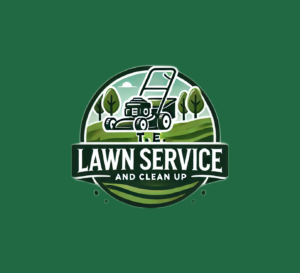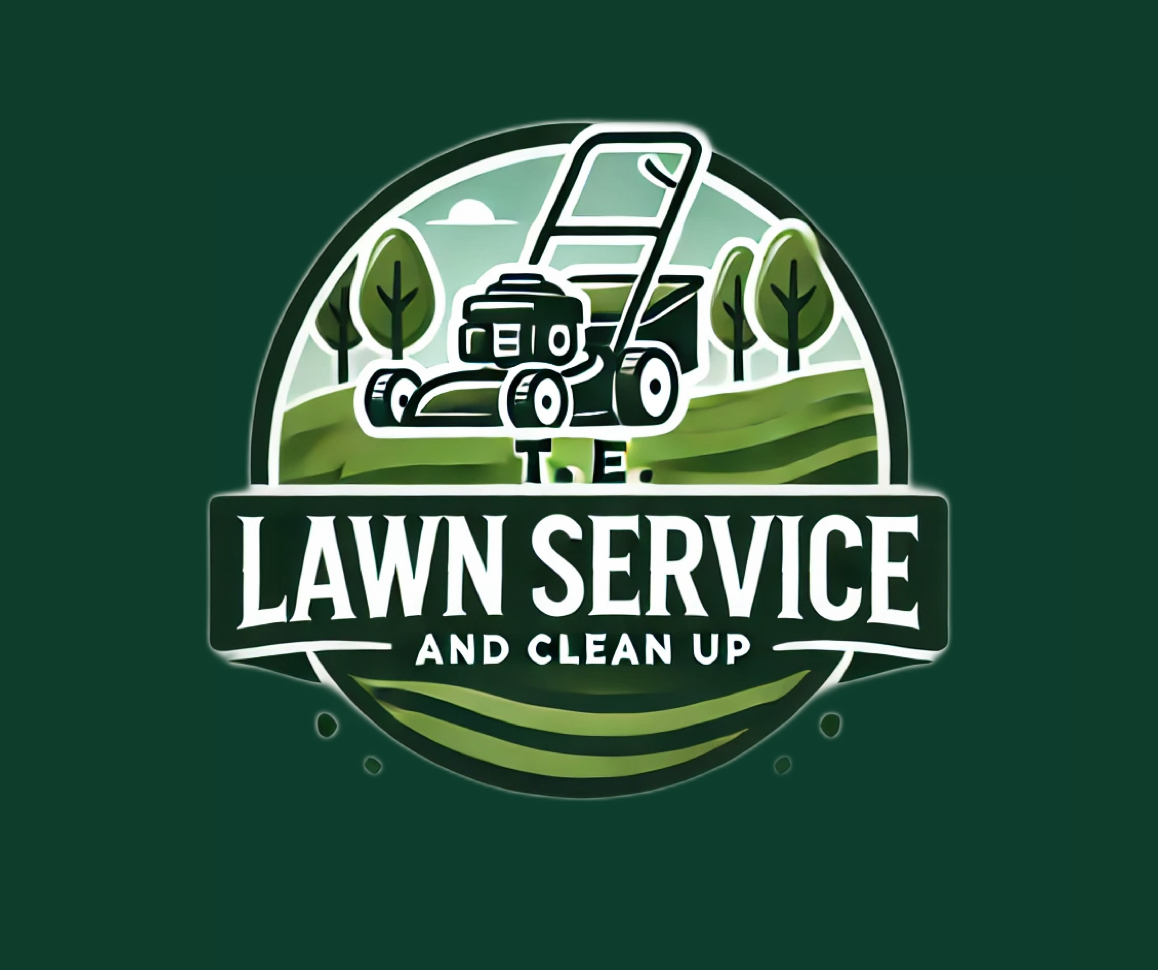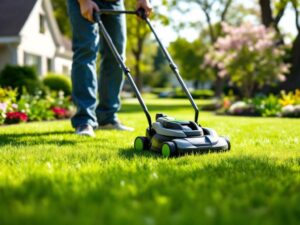A healthy, green lawn is one of the most important features of curb appeal for Atlanta homeowners. But keeping grass vibrant year-round takes more than regular mowing and watering—it requires the right nutrients at the right times. Fertilization is the backbone of strong turf, and while many homeowners turn to professionals, you can also learn to fertilize your lawn like a pro with the right guidance.
At TE Lawn Service and Clean Up, we’ve helped countless Atlanta homeowners achieve picture-perfect lawns. In this article, we’ll share a complete DIY fertilization guide designed for Atlanta’s climate, covering everything from soil preparation to seasonal schedules. By the end, you’ll know how to give your grass exactly what it needs—and when it’s best to call in professional support.
Why Fertilization Matters for Atlanta Lawns
Grass is a living organism, and just like people, it requires nutrients to thrive. While soil naturally provides some nutrition, much of it gets depleted over time—especially in Atlanta’s heavy clay soils. Fertilization replenishes those nutrients and ensures grass has the fuel to grow strong roots, resist weeds, and stay green through the city’s hot summers and unpredictable weather.
The three essential nutrients in lawn fertilizer are:
- Nitrogen (N) – Encourages lush, green top growth.
- Phosphorus (P) – Supports root development and early growth.
- Potassium (K) – Builds stress tolerance against heat, drought, and disease.
Balancing these nutrients correctly is the difference between a struggling lawn and a healthy one.
Step 1: Test Your Soil First
Before you spread fertilizer, you need to know what your soil is missing. Many homeowners in Atlanta apply fertilizer blindly, which often leads to too much nitrogen and not enough potassium.
You can purchase a soil test kit at most garden centers, or send a sample to the University of Georgia Cooperative Extension for detailed analysis. A professional soil test will:
- Measure pH (most lawns thrive between 6.0–7.0)
- Show nutrient deficiencies
- Recommend the best fertilizer blend
This one step ensures you’re not wasting money or harming your lawn with the wrong fertilizer.
Step 2: Choose the Right Fertilizer
Once you know your soil’s needs, you can select a fertilizer. Atlanta lawns typically use warm-season grasses like Bermuda, Zoysia, and Centipede, or cool-season grass like Fescue. Each has slightly different requirements.
Look at the N-P-K ratio on fertilizer labels. For example, a bag labeled 16-4-8 contains:
- 16% Nitrogen
- 4% Phosphorus
- 8% Potassium
In Atlanta:
- Bermuda and Zoysia do best with high nitrogen and balanced potassium.
- Fescue benefits from fertilizers higher in phosphorus during fall seeding.
Pro tip: Opt for slow-release nitrogen to avoid burning grass and to provide steady feeding.
Step 3: Calculate the Correct Amount
Over-fertilization is one of the most common DIY mistakes. Too much fertilizer can burn your lawn, pollute waterways, and cause rapid growth that stresses grass roots.
To avoid this:
- Measure your lawn’s square footage.
- Check the fertilizer bag for recommended application rates (usually listed per 1,000 sq. ft.).
- Multiply the rate by your lawn’s size to calculate how much product to apply.
Example: If your yard is 5,000 sq. ft. and the fertilizer calls for 1 lb. of nitrogen per 1,000 sq. ft., you’ll need 5 lbs. of nitrogen total.
Step 4: Apply Fertilizer Evenly
Uneven application leads to streaky lawns—dark green in some areas and pale in others. A broadcast or rotary spreader is the best tool for even coverage.
Tips for applying like a pro:
- Walk in straight, overlapping lines.
- Set the spreader to the recommended setting from the bag.
- Apply half the fertilizer in one direction, and the other half in a crisscross pattern.
Always apply fertilizer on dry grass, and then water lightly to wash nutrients into the soil.
Step 5: Follow Atlanta’s Seasonal Fertilization Schedule
Timing is everything in lawn care. Fertilizing at the wrong time can do more harm than good, especially in Atlanta’s mix of hot summers and mild winters.
Here’s a general fertilization calendar for Atlanta lawns:
Warm-Season Grasses (Bermuda, Zoysia, Centipede)
- Early Spring (April) – Apply pre-emergent herbicide and light fertilizer.
- Late Spring (May-June) – Apply nitrogen-rich fertilizer as grass is actively growing.
- Summer (July-August) – Apply slow-release fertilizer to maintain color.
- Fall (September) – Apply potassium-rich fertilizer to prepare for dormancy.
Cool-Season Grass (Fescue)
- Early Fall (September-October) – Fertilize after overseeding to encourage strong root growth.
- Late Fall (November) – Apply a second feeding before winter.
- Early Spring (March) – Apply light fertilizer to promote green-up.
Step 6: Water Fertilizer in Properly
Fertilizer should always be watered in after application. This helps nutrients penetrate the soil and reduces the risk of burning.
Best practices:
- Water within 24 hours of fertilizing.
- Use about ¼ inch of water.
- Avoid heavy watering that causes runoff.
If you’re relying on rainfall, check the forecast and apply fertilizer before a light shower—not before a downpour.
Step 7: Combine Fertilization with Other Lawn Care
Fertilization works best as part of a complete lawn care plan. In Atlanta, combining fertilizer with mowing, watering, weed control, and aeration leads to long-term success.
- Aeration (spring or fall) improves nutrient absorption.
- Mulching adds organic matter to soil.
- Weed control prevents fertilizer from feeding invasive plants.
A comprehensive approach ensures fertilizer dollars aren’t wasted.
Step 8: Watch for Signs of Over or Under-Fertilization
Even with careful planning, lawns can send signals when fertilization isn’t balanced:
- Too much fertilizer: Grass grows too fast, looks burnt, or turns dark green.
- Too little fertilizer: Grass looks pale, thin, or weeds start taking over.
Correct these issues quickly by adjusting your schedule or consulting a professional lawn service.
Step 9: Stay Safe When Fertilizing
Fertilizers contain chemicals that should be handled carefully. Always:
- Wear gloves and closed shoes.
- Store fertilizer in a dry, cool place away from children and pets.
- Sweep any fertilizer off sidewalks or driveways back into the lawn.
Safety ensures both your family and the environment are protected.
Step 10: Know When to Call a Professional
DIY lawn fertilization can save money, but it also takes time, equipment, and attention to detail. For many Atlanta homeowners, hiring a professional service like TE Lawn Service and Clean Up delivers better results without the hassle.
Professional lawn care services offer:
- Custom fertilizer blends based on soil testing.
- Regular applications timed to Atlanta’s climate.
- Integrated weed, pest, and disease control.
- Expert knowledge of warm-season and cool-season grasses.
When you want guaranteed results, calling in the experts is the smartest move.
Conclusion
Fertilizing your lawn doesn’t have to be complicated. With the right preparation, product selection, and timing, Atlanta homeowners can keep their grass green, strong, and healthy all year long.
By following these 10 DIY lawn fertilization tips, you’ll learn to feed your lawn like a pro. But if you’d rather skip the trial-and-error, TE Lawn Service and Clean Up is ready to help. Our team provides expert lawn fertilization, weed control, and complete maintenance tailored to Atlanta’s climate.
Call TE Lawn Service today to schedule your fertilization program and enjoy a lawn that’s the envy of your neighborhood.




